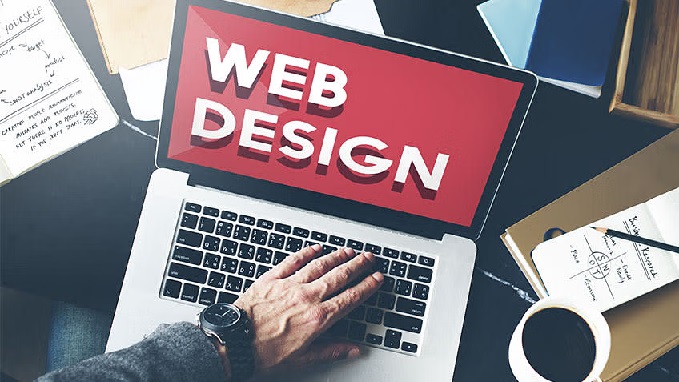Details about web designs are not merely aesthetic choices but intricate creations that weave functionality, user experience, and visual appeal into the fabric of the digital landscape. As we traverse the ever-evolving realm of web design, it becomes imperative to dissect more details about web designs here and delve into the nuances that make a website stand out in the vast sea of online content.
Introduction
In the digital age, details about web designs are the silent architects shaping our online experiences. From the rudimentary HTML structures to the sophisticated CSS styling and dynamic JavaScript functionalities, the evolution of web design mirrors the progress of technology. Understanding the pivotal role it plays in creating a lasting impression is paramount in a visually-driven online world.
Foundational Elements of Web Designs
Structural Components
HTML5: The Backbone of Web Structure
HTML5, the fifth iteration of the HyperText Markup Language, stands as the bedrock of web structures. Its semantic elements provide a blueprint for a well-organized and accessible website. Headings, paragraphs, and lists are not just tags; they are the foundation upon which user-friendly interfaces are built.
CSS3: Styling for Aesthetic Appeal
CSS3 introduces style to the substance. Selecting the right color palette, defining layout structures, and implementing responsive design all fall under the purview of Cascading Style Sheets. It transforms a bland webpage into a visually captivating canvas.
JavaScript: Elevating Interactivity
JavaScript breathes life into web designs. From dynamic content updates to interactive user interfaces, its versatility is unmatched. Harnessing the power of JavaScript ensures that a website isn’t static but responds dynamically to user actions.
Visual Aspects
Color Schemes and Branding
Selecting the right color scheme extends beyond aesthetics; it communicates brand identity. Understanding the psychology of colors and their impact on user emotions is a pivotal aspect of effective web design.
Typography Choices
The fonts chosen for a website aren’t mere letters; they are the voice of the content. Typography plays a crucial role in readability, setting the tone, and reinforcing the brand personality.
Imagery and Graphics Selection
Visual elements transcend decoration. Thoughtful selection of images and graphics enhances the user experience, aids in storytelling, and contributes to the overall aesthetics of the website.
Responsive Design and User Experience
Adaptive Layouts
Fluid Grid Systems
Responsive web design demands fluidity. Fluid grid systems ensure that the layout adapts seamlessly to various screen sizes, providing a consistent and enjoyable user experience.
Flexible Media Queries
Media queries are the detectives of responsive design, instructing the browser on how to adjust styles based on the device’s characteristics. Their judicious use ensures a harmonious display across devices.
Navigation Optimization for Various Devices
Navigating a website on a desktop differs from a mobile device. Optimizing navigation for different screen sizes and touch gestures is pivotal for a user-friendly experience.
User-Centric Approach
Understanding Target Audience
A successful web design isn’t just visually appealing; it resonates with the target audience. Understanding user demographics, preferences, and behaviors informs design decisions.
Accessibility Considerations
Inclusive design is the hallmark of a responsible web designer. Ensuring accessibility for users with disabilities broadens the reach of the website and contributes to a more equitable digital space.
Intuitive Navigation Structures
Navigating a website should be instinctive. Intuitive navigation structures reduce bounce rates and keep users engaged, fostering a positive user experience.
This is just a glimpse into the multifaceted world of web design. As we unravel the layers of details about web designs, we uncover a symphony of code, visuals, and user-centric strategies orchestrating a seamless online experience. Stay tuned for the next segment where we delve into advanced techniques elevating web designs to new heights.
Incorporating Advanced Techniques
Animation and Microinteractions
Purposeful Animations
Animations are not mere embellishments; they serve a purpose. Whether guiding user attention, indicating progress, or enhancing storytelling, purposeful animations contribute to a richer user experience.
Microinteractions for Engagement
Microinteractions are the subtle cues that engage users. From button clicks to feedback animations, these small details foster a sense of interactivity, making the user feel more connected to the website.
Balancing Performance and Visual Appeal
While animations enhance aesthetics, balancing them with performance is crucial. Optimizing animations ensures that the website remains fast and responsive, providing a seamless experience without compromising on visual allure.
Emerging Trends
Dark Mode Designs
Dark mode isn’t just a trend; it’s a design choice catering to user preferences and reducing eye strain. Implementing dark mode requires a thoughtful approach to maintain readability and aesthetics.
3D Graphics and Illustrations
Adding a third dimension to graphics and illustrations brings depth to web design. Integrating 3D elements elevates visual appeal, creating immersive experiences that captivate users.
Futuristic UI/UX Concepts
Staying ahead means embracing the future. Futuristic UI/UX concepts explore innovative navigation, interactive elements, and unique user interfaces that set a website apart in the digital landscape.
In the intricate tapestry of details about web designs, these advanced techniques and optimization strategies serve as the threads that weave a website into a masterpiece. As we explore the final segment on performance optimization, the journey through the intricacies of web design continues.
